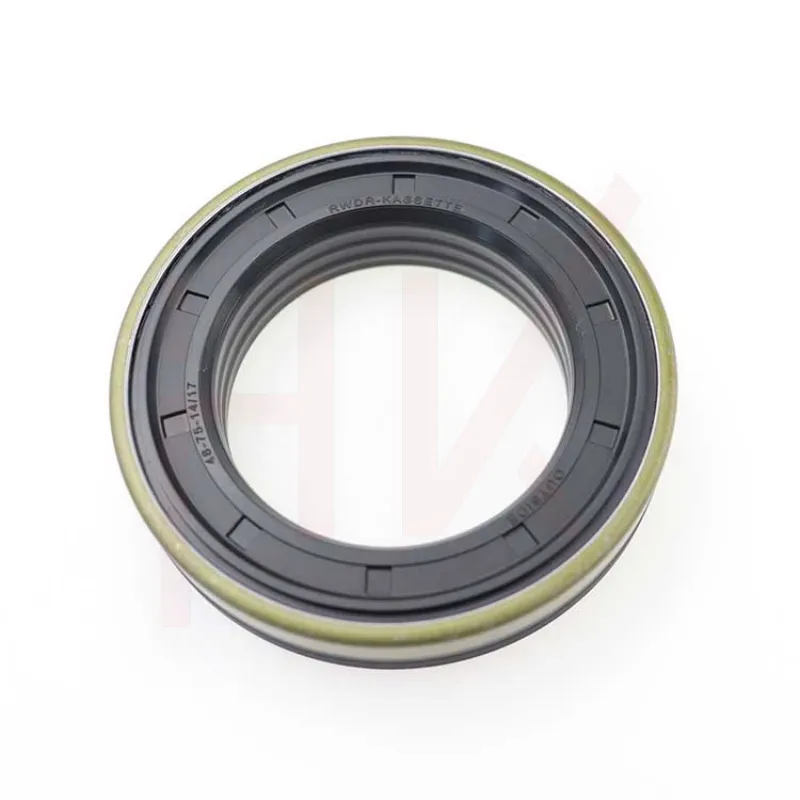Nov . 23, 2024 09:10 Back to list
wiper seal hydraulic cylinder
Understanding Wiper Seals in Hydraulic Cylinders
Hydraulic systems are pivotal in a multitude of industries, from manufacturing and construction to automotive applications. At the heart of these systems lies the hydraulic cylinder, a device that converts hydraulic energy into mechanical force. One crucial component of hydraulic cylinders is the wiper seal. This article will explore the function, types, materials, and importance of wiper seals in ensuring the efficiency and longevity of hydraulic cylinders.
What is a Wiper Seal?
A wiper seal, also known as a dust seal or scraper seal, is designed to prevent external contaminants from entering the hydraulic cylinder. Located at the outer end of the cylinder, it effectively keeps dirt, dust, and moisture from compromising the internal sealing components, which can lead to system failure over time. The primary function of the wiper seal is to maintain the cleanliness of the hydraulic fluid and protect the integrity of the hydraulic components, thus ensuring smooth operation and extending the lifecycle of the cylinder.
The Importance of Wiper Seals
1. Contamination Prevention Hydraulic systems are incredibly sensitive to contamination. Dust and debris can cause significant wear and tear on seals, leading to hydraulic fluid leaks and ultimately system malfunction. Wiper seals serve as the first line of defense against these harmful particles.
2. Efficiency Maintenance As contaminants build up in the system, they can disrupt the flow of hydraulic fluid, diminishing efficiency. A good wiper seal helps maintain optimal performance, ensuring that the hydraulic fluid operates smoothly and effectively.
3. Cost Savings Preventing contamination is crucial in mitigating repair costs. Regular maintenance and the use of effective wiper seals can lead to significant savings by reducing downtime and the need for expensive repairs or replacements of hydraulic components.
4. Safety Hydraulic systems can operate under high pressure, and any failure can result in hazardous situations. Wiper seals play a critical role in ensuring the safe operation of hydraulic cylinders, thus protecting both machinery and personnel.
Types of Wiper Seals
Wiper seals come in various designs to accommodate different applications and operating conditions. Some common types include
wiper seal hydraulic cylinder

- Lip Seals These are shaped like a lip and do an excellent job of wiping away contaminants while providing a tight seal against the cylinder shaft.
- U-Cups Commonly used in low-pressure applications, U-cups can effectively wipe surfaces by utilizing their unique shape.
- Flat Seals These seals are typically used in applications where there is minimal movement and fewer contaminants.
- Environmental Seals These are specifically designed to offer a high level of protection against the ingress of dirt and moisture in rugged environments.
Materials Used in Wiper Seals
The choice of material for wiper seals is critical as it affects the seal's durability and performance. Common materials include
- Nitrile Rubber (NBR) Known for its excellent resistance to oils and hydraulic fluids, NBR is one of the most widely used materials for wiper seals.
- Polyurethane Renowned for its durability and wear resistance, polyurethane wiper seals are ideal for high-performance applications.
- Fluorocarbon (FKM) Providing excellent chemical resistance, FKM seals are suitable for use in harsh environments where exposure to aggressive fluids may occur.
Conclusion
Wiper seals are integral to the operational efficiency and longevity of hydraulic cylinders. By preventing contamination and maintaining hydraulic fluid cleanliness, they contribute significantly to the overall performance of hydraulic systems. Understanding the types and materials of wiper seals can help in selecting the right product for specific applications, ultimately leading to enhanced reliability, safety, and cost-effectiveness in hydraulic operations. As industries continue to rely on hydraulics for efficient operation, the importance of wiper seals will only become more pronounced in maintaining system integrity and performance.
-
The Trans-formative Journey of Wheel Hub Oil Seals
NewsJun.06,2025
-
Graphene-Enhanced Oil Seals: Revolutionizing High-Pressure Oil Sealing
NewsJun.06,2025
-
Future of Hydraulic Sealing: Advanced Intelligent TCN Oil Seals
NewsJun.06,2025
-
Don’t Let a Broken TCV Oil Seal Ruin Your Day
NewsJun.06,2025
-
Bio-Inspired Dust Seals for Better Sealing Performance
NewsJun.06,2025
-
Biodegradable and Sustainable Hydraulic Seal Materials
NewsJun.06,2025
-
Top Oil Seal Solutions for Your Industrial Needs
NewsMay.22,2025
Products categories
















